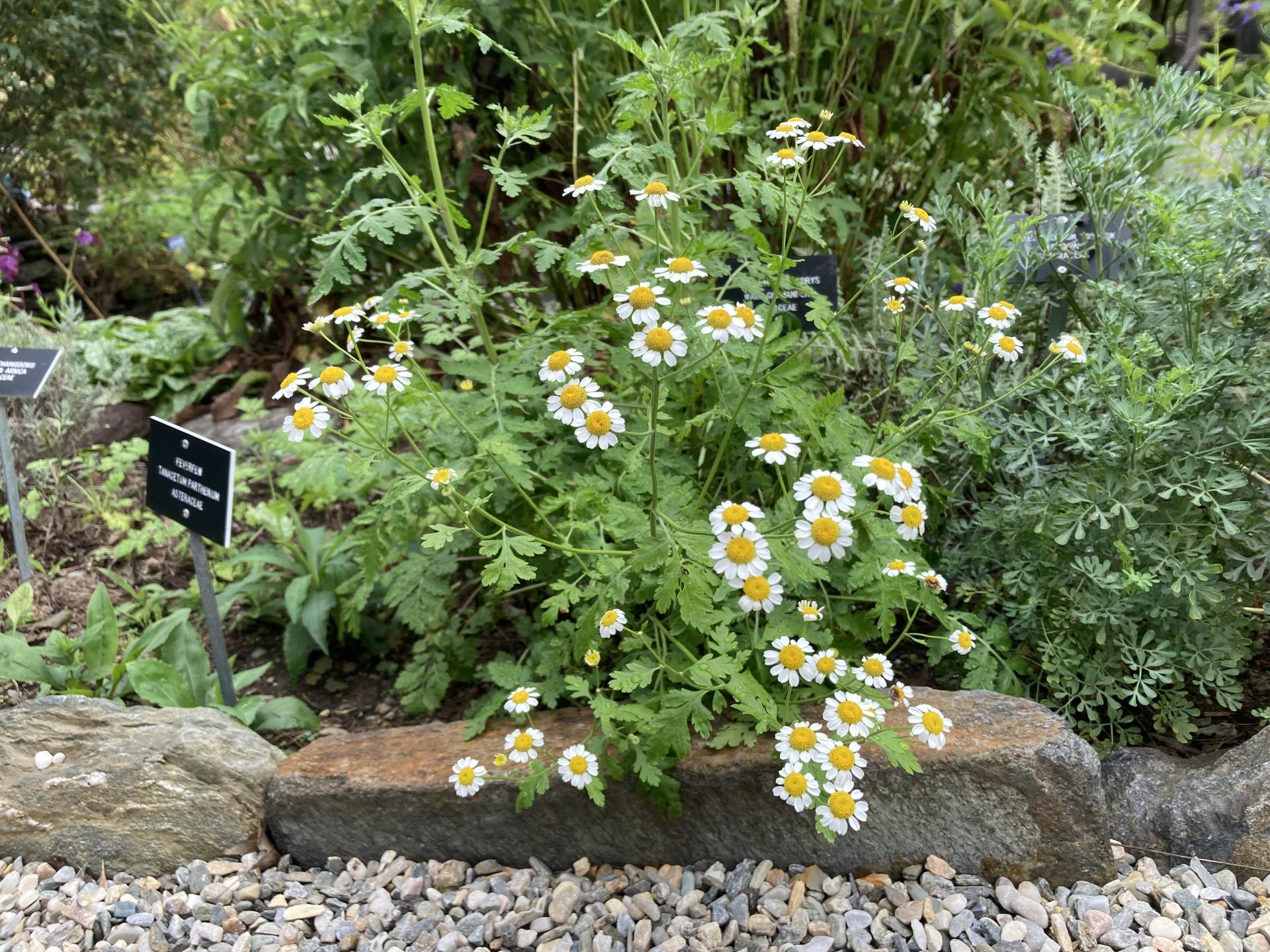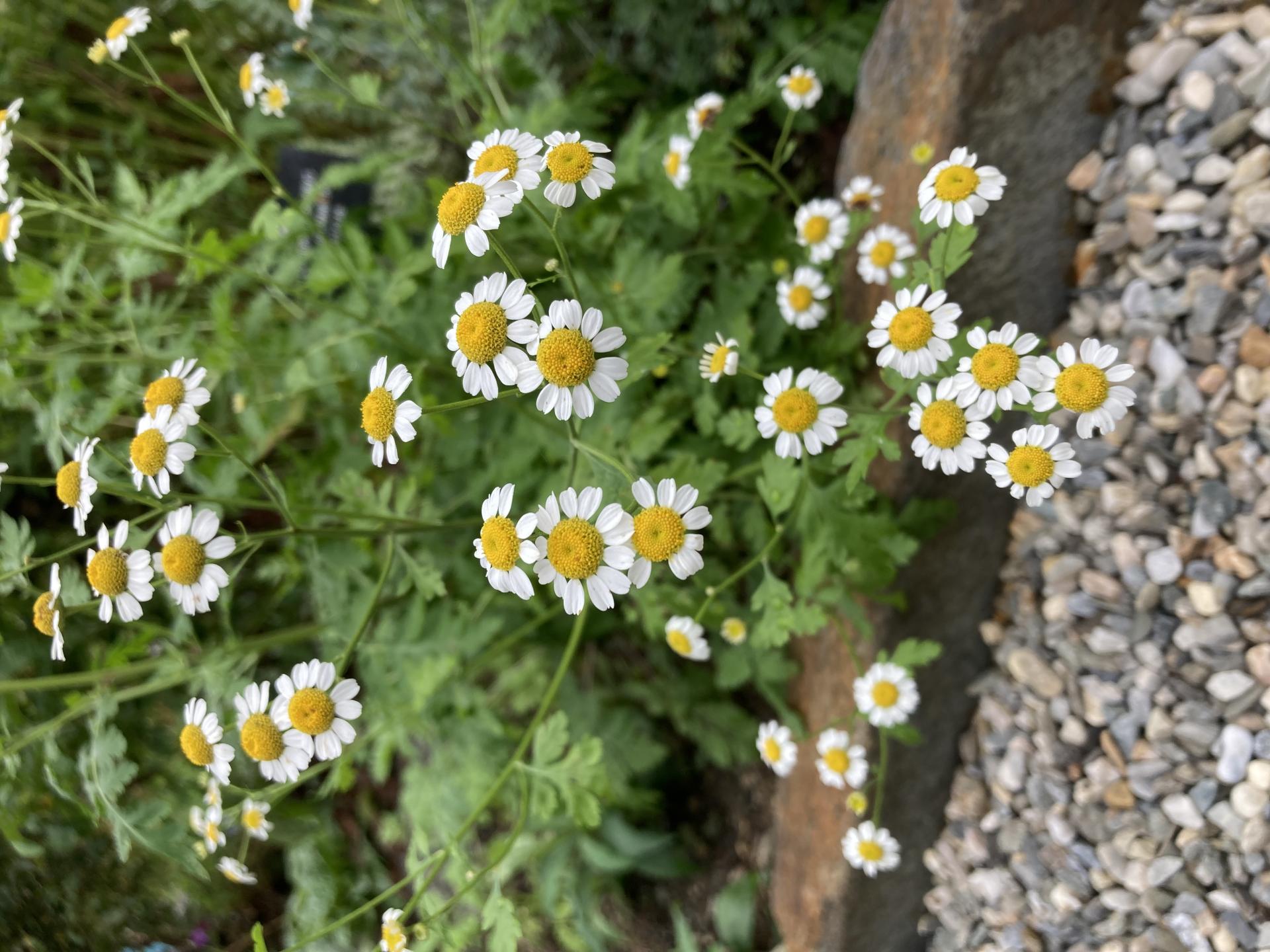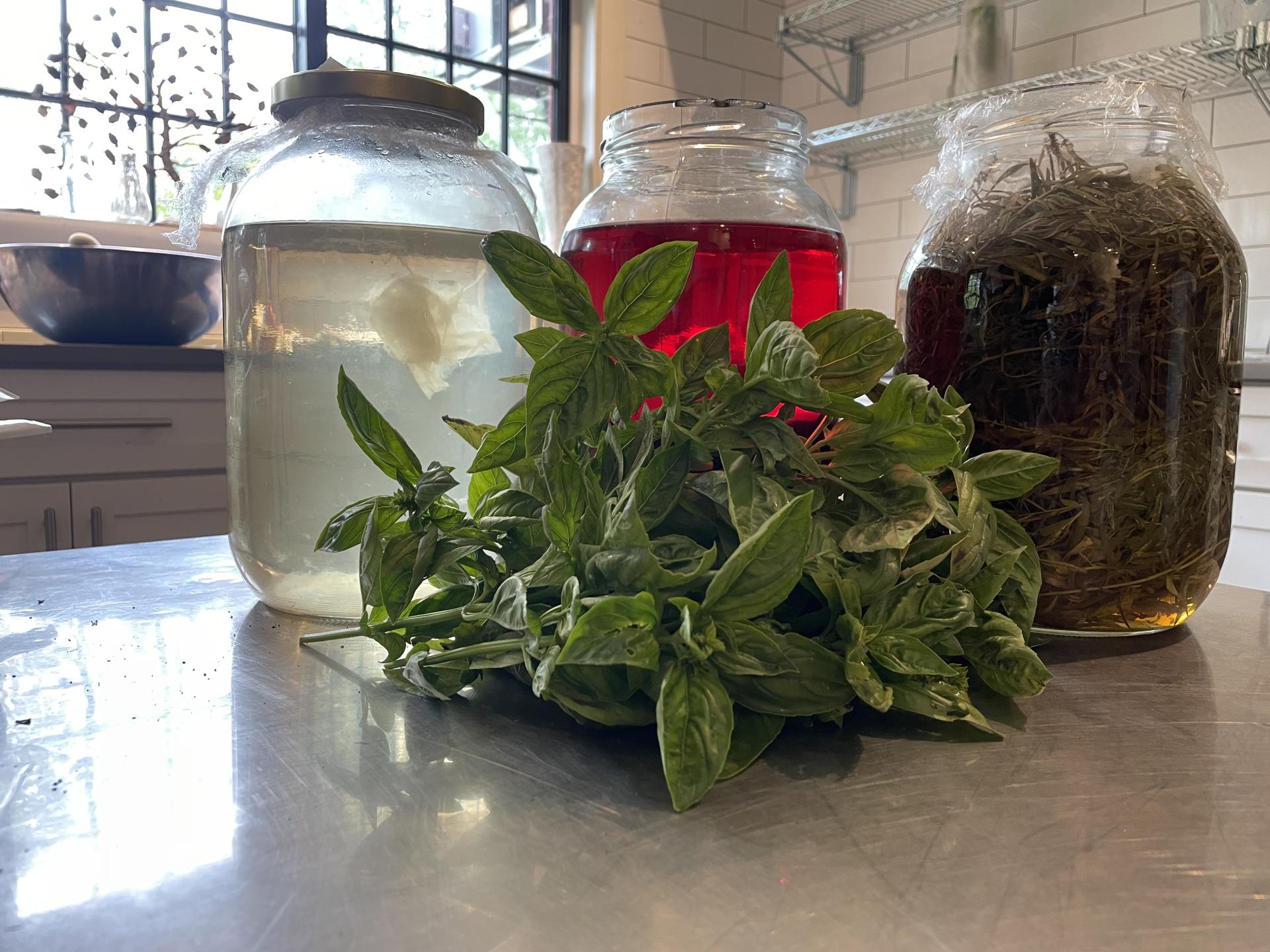You are here
Herb of the Week: Feverfew (Tanacetum Parthenium)
Herb of the Week: Feverfew (Tanacetum Parthenium)
By Barbara Smith
Herb of the Week: Feverfew (Tanacetum Parthenium)
The clue to this herb’s history lies in its name – Feverfew. For centuries, the herb was admired as effective in driving out fevers, and also as a sedative and popular insecticide. Recorded use as a “fever herb” dates back to the reign of Charlemagne in 812 AD. More recently, modern research has verified feverfew’s effectiveness in reducing the number and severity of headaches.
This delightful plant grows 2-3 feet tall, producing dainty white daisy-like florets above highly aromatic cut-leaf foliage, flowering mid-summer through fall (it’s currently blooming in the BBG Herb Display Garden near the Center House). Varieties include both single (biennial) and double-flowered types (perennial). “White Star” is a recommended single sort, and “White Bonnet” is a fully double, quite showy variety. All are easy to grow by cuttings, seeds, or divisions. The plants are hardy to zone 5. Ornamentally, the varieties are popular in gardens and containers. Feverfew is known as a prolific self-sowing plant.
Closely related to chamomile, the chief difference is that feverfew is more erect and its leaves are used herbally; chamomile is more prostrate in its growth and the flowers are employed herbally. One reference suggests not planting feverfew among plants needing pollination, as bees avoid it for the smell of it.
Feverfew was introduced to the New World by early European settlers, and it is now naturalized from Quebec south and west to Ohio. The plant is within the Asteracea family. Originally grouped in the Chrysanthemum genus, more recently it has been realigned to the Tanacetum genus.
Feverfew stems and flowers dry well and may be added to herb and flower arrangements. Leaves and stems produce a greenish-yellow dye in wool mordanted with chrome.
WHAT’S HAPPENING IN THE KITCHEN?
As the production season starts to wind down, there’s an urgency to make as many items as possible, utilizing what’s available. A historic recipe for us is the “J. Wilson Tarragon Dressing” named after an original member of the Herb Associates group. That “Tarragon Dressing” and “Parsley Dressing” were prepared, along with our new product “BBG BBQ Sauce,” a favorite with customers. Two bottles of “Lavender and Lemon Verbena Tea” and one bottle of “Peppermint Tea” were prepared. The beautiful “Opal Basil Jelly” was made, too. You can find these, along with a wide variety of other products created by the Herb Associates, in the BBG Gift Shop and at the upcoming Harvest Festival. Look for the Herb Associates’ Booth and visit with the people who have crafted these taste treats! All proceeds benefit the Garden.
The Berkshire Botanical Garden’s Herb Associates began in 1957 and have been making and selling products for the benefit of BBG ever since. At BBG, the Herb Associates oversee a display garden and production garden, both located near the Center House. Members/volunteers meet every Tuesday morning during the late spring through mid-autumn each year, coinciding when the gardens themselves are open to the public. Members plant, weed and tend the gardens, as well as harvest and process the variety of herbs.
Help Our Garden Grow!
Your donation helps us to educate and inspire visitors of all ages on the art and science of gardening and the preservation of our environment.
All donations are 100 percent tax deductible.







